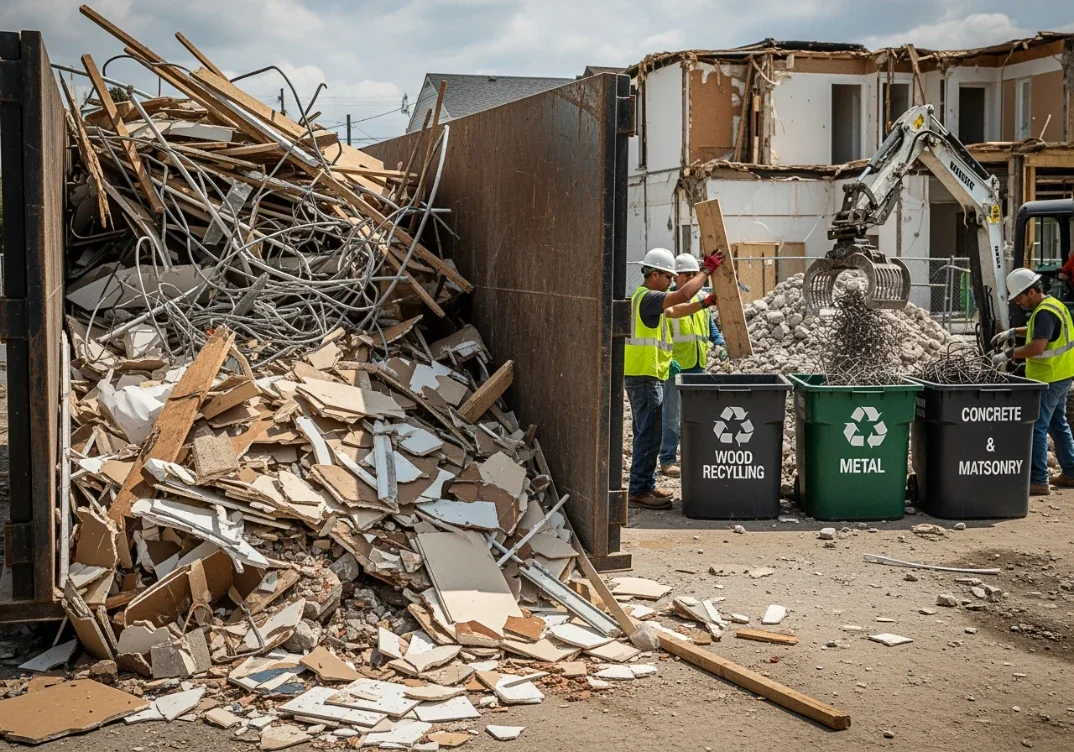How to Rewire a Lamp: A Step-by-Step Guide
Ready to breathe new life into your favorite lamp? Follow our detailed guide on how to rewire a lamp with step-by-step instructions for a safe and easy DIY project.
There's something special about a favorite lamp. Maybe it’s the warm glow it gives off on cozy evenings, or perhaps it’s a quirky vintage piece that you can’t bear to part with. But what happens when that beloved lamp starts to flicker or goes out completely? Fear not! Instead of tossing it aside or shelling out cash for a new one, you can learn how to rewire a lamp yourself. In this guide, we’ll walk you through “How to Rewire a Lamp: A Step-by-Step Guide,” ensuring that you have all the tools and knowledge to tackle this DIY project with confidence. Ready to dive in and get your lamp shining brightly again? Let’s get started!
How to Rewire a Lamp: The Basics
Understanding Your Lamp
Before we jump into rewiring, it’s important to understand the basic components of a lamp:
Base: The bottom part that holds everything together.
Socket: Where the light bulb screws in. This is often the part that needs replacing.
Cord: The wire that carries electricity from the outlet to the lamp.
Plug: The end of the cord that goes into the wall socket.
Tools and Materials Needed
Gathering your tools beforehand will make the process smoother. Here’s what you’ll need:
Replacement Socket
Replacement Cord (if needed)
Wire Strippers
Screwdriver (Phillips and Flathead)
Electrical Tape
Pliers
Heat Shrink Tubing (optional)
Multimeter (optional, for testing)
How to Rewire a Lamp: Step-by-Step Instructions
Step 1: Safety First!
Before you even think about touching that lamp, safety should be your top priority. Here’s how to prepare:
Unplug the Lamp: Always unplug your lamp before you start working on it. You don’t want to risk getting shocked!
Inspect for Damage: Check the cord and socket for any visible damage. If you see fraying or burn marks, it’s definitely time for a rewire.
Before you begin any repairs, always unplug your lamp to ensure your safety and avoid the risk of electric shock. Once unplugged, inspect the lamp thoroughly for any signs of damage. Examine the cord for fraying, cracks, or exposed wires, as well as the socket for burn marks or discoloration. These issues can indicate potential hazards that need to be addressed. If you notice any visible damage, it’s crucial to proceed with a rewire to restore the lamp's functionality safely. Taking these precautions not only protects you but also ensures that your lamp will operate safely and efficiently once the repairs are complete. By being diligent about safety, you can enjoy your lighting without any worries.
Step 2: Disassemble the Lamp
Now that you’re safely unplugged, let’s take that lamp apart:
Remove the Shade: If your lamp has a shade, carefully remove it and set it aside. If it has a harp (the metal frame that holds the shade), take that off too.
Unscrew the Socket: Depending on your lamp design, you may need to unscrew or detach the socket from the base. Keep any screws or small parts in a safe place!
Begin by carefully removing the lamp shade, setting it aside in a safe location. If your lamp features a harp—the metal frame that holds the shade—gently detach that as well. Next, focus on the socket. Depending on your lamp's design, you may need to unscrew or disconnect the socket from the base. This step is crucial for accessing the internal components that may need rewiring. Make sure to keep any screws or small parts in a designated container or area to prevent loss. Taking the time to organize these components will make reassembly much easier once your repairs are complete. By following these steps methodically, you’ll set yourself up for a successful rewiring process and ensure the lamp functions safely.
Step 3: Examine the Wiring
With the socket exposed, take a closer look at the wiring:
Identify the Wires: You should see two wires connected to the socket: one black (or brass) and one white (or silver). If there’s a third wire (green or bare), that’s your ground wire.
Check for Damage: Look for any frayed or burnt areas. If the wiring looks old or damaged, it’s best to replace it.
Typically, you’ll see two wires: one black (or brass) and one white (or silver). If there’s a third wire that is green or bare, this indicates the ground wire. Next, thoroughly inspect each wire for any signs of damage, such as fraying, burns, or other wear. Damaged wiring can pose serious safety hazards, so it's essential to address any issues immediately. If you notice any deterioration in the wiring, it’s advisable to replace it to ensure the safety and functionality of your lamp. Taking these precautions will help prevent potential electrical problems and ensure your lamp operates safely and effectively once you’ve completed the rewiring process.
Step 4: Disconnect the Old Socket
Now, let’s disconnect the old socket:
Loosen the Screws: Use your screwdriver to loosen the screws holding the wires to the socket.
Remove the Wires: Carefully pull the wires away from the socket. If they’re stuck, don’t force them; just loosen the screws more.
Start with loosening the screws that secure the wires to the socket using your screwdriver. This step is crucial for safely disconnecting the wiring. Once the screws are sufficiently loosened, gently pull the wires away from the socket. If you encounter resistance and the wires don’t come free easily, avoid forcing them out; instead, further loosen the screws to ensure a smooth removal. Taking your time with this process is important to prevent any damage to the wires or the socket itself. Once the wires are disconnected, you’ll be ready to proceed with the rewiring process, ensuring your lamp is safe and functional when you reassemble it.
Step 5: Install the New Socket
Time to install that shiny new socket!
Connect the Wires: Attach the black wire to the brass terminal and the white wire to the silver terminal on the new socket. If there’s a ground wire, connect it to the green screw.
Tighten the Screws: Make sure everything is snug and secure—loose connections can lead to electrical issues.
Double Check: Give it a once-over to ensure all connections are correct and tight.
Start by connecting the wires: attach the black wire to the brass terminal and the white wire to the silver terminal on the new socket. If your lamp has a ground wire, connect it to the green screw for added safety. Once the wires are securely attached, tighten the screws to ensure everything is snug—loose connections can lead to electrical issues down the line. After tightening, take a moment to double-check all connections, confirming that each wire is properly secured and positioned correctly. A thorough inspection at this stage can help prevent future problems and ensure your lamp functions safely and efficiently. With everything in place, you're ready for the next steps in reassembling your lamp!
Step 6: Reassemble the Lamp
Now, let’s put everything back together:
Reattach the Socket: If you had to unscrew the socket from the base, do this now.
Put the Shade Back On: Reattach the lamp shade or harp as needed.
Secure Everything: Make sure everything is tightened and secured. You don’t want any wobbling!
First, reattach the socket to the base if you had previously unscrewed it. Ensure it's firmly secured to provide stability. Next, put the lamp shade back on, or reattach the harp if you removed it earlier. Make sure the shade sits evenly and aligns properly with the lamp's design. Once everything is in place, take a moment to double-check that all components are tightened and secured; you want to avoid any wobbling or instability. This final inspection will ensure that your lamp is not only functional but also aesthetically pleasing. With everything securely reassembled, your lamp is ready to light up your space beautifully!
Step 7: Test the Lamp
You’re almost done! Now it’s time to test your handiwork:
Plug It In: Carefully plug the lamp back into the wall outlet.
Turn It On: Flip the switch and see if the light comes on! If it does, congratulations—you’ve successfully rewired your lamp!
Begin by carefully plugging the lamp back into the wall outlet, ensuring the connection is secure. Once plugged in, flip the switch to turn the lamp on and see if the light illuminates. If it lights up, congratulations—you’ve successfully rewired your lamp! Take a moment to enjoy your accomplishment, knowing that you’ve not only enhanced your lamp’s functionality but also ensured its safety. If the light doesn’t come on, double-check your connections and make sure everything is secure. With a little patience, you’ll have a beautifully rewired lamp ready to brighten your space!
Troubleshooting Common Issues
Even the best DIY projects can hit a snag. Here are some common issues and how to solve them:
1. The Lamp Doesn’t Turn On
Check the Bulb: Make sure the bulb is working. Try replacing it with a known good bulb.
Inspect Connections: If it still doesn’t work, double-check all wire connections. Make sure everything is secure and correctly wired.
2. Flickering Light
Loose Wiring: A flickering light can indicate loose wiring. Check the connections in the socket and tighten them as needed.
Faulty Socket: If the socket itself is damaged, it may need replacing.
3. Burning Smell
Unplug Immediately: If you smell something burning, unplug the lamp right away!
Check Wiring: Inspect all wiring for damage. If you find any, you may need to replace the cord and possibly the socket.
Conclusion
And there you have it—your complete “How to Rewire a Lamp: A Step-by-Step Guide”! With a little patience and the right tools, you can give new life to your favorite lamp and save some cash while you’re at it. Remember, the key is to take your time, double-check your work, and always prioritize safety. So, the next time that lamp flickers or refuses to turn on, you’ll know exactly what to do. Happy rewiring!
Frequently Asked Questions
1. Can I rewire a lamp without any electrical experience?
Yes, many people successfully rewire lamps without extensive electrical experience. Just take your time, follow the steps carefully, and always prioritize safety!
2. How long does it take to rewire a lamp?
For most people, rewiring a lamp takes about 30 minutes to an hour, depending on familiarity with the process and any complications that may arise.
3. What type of wire should I use for rewiring a lamp?
Standard lamp cord is sufficient for most lamps. You can find it at hardware stores, usually labeled for lighting applications.
4. Is it safe to use a lamp with a damaged cord?
No, using a lamp with a damaged cord is unsafe and can lead to electrical shocks or fires. Always repair or replace damaged cords before using the lamp.
5. Can I add a dimmer switch while rewiring?
Yes, adding a dimmer switch can be done while rewiring your lamp. Just ensure you follow the manufacturer’s instructions and check compatibility with the lamp and bulb type.































